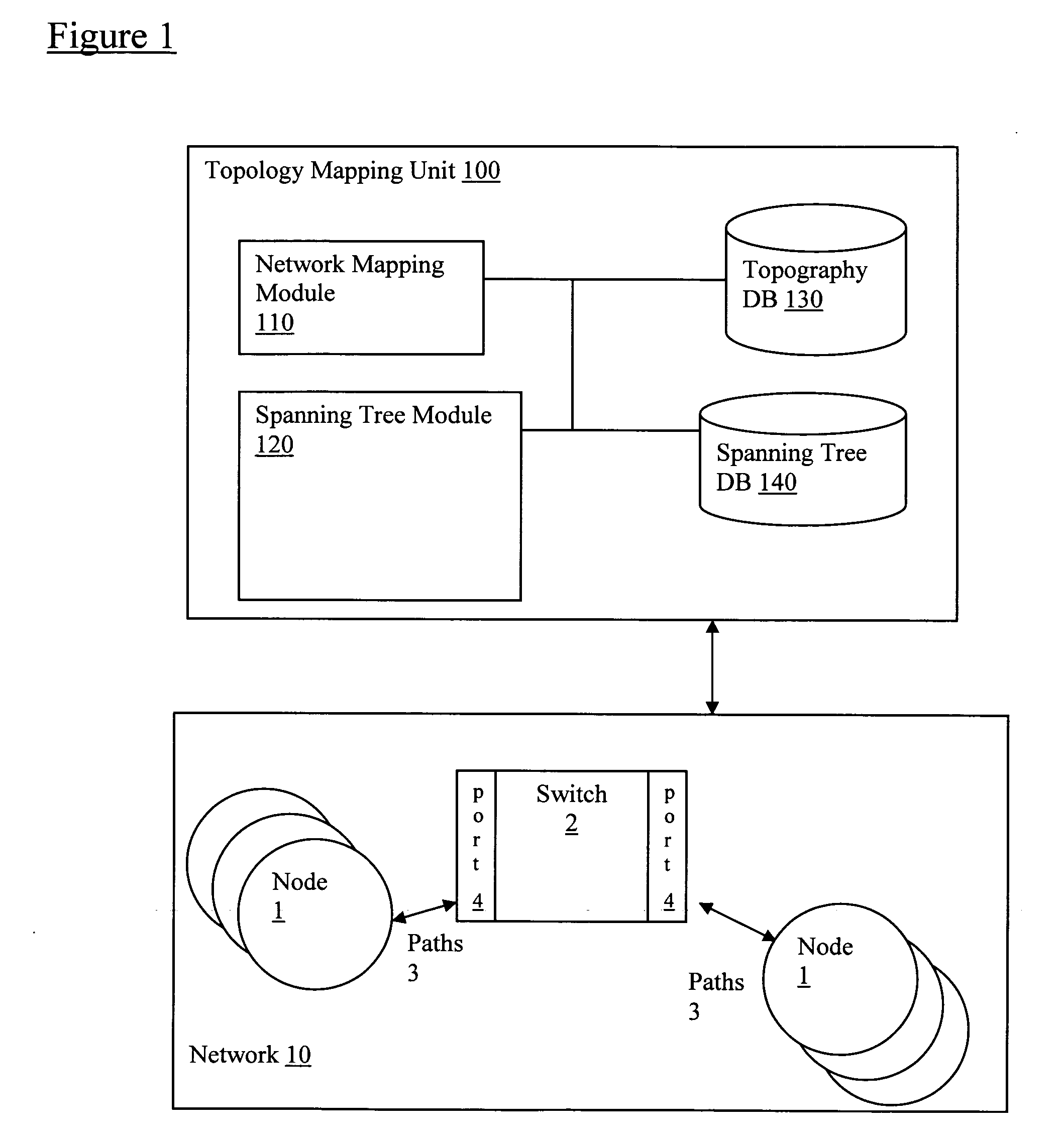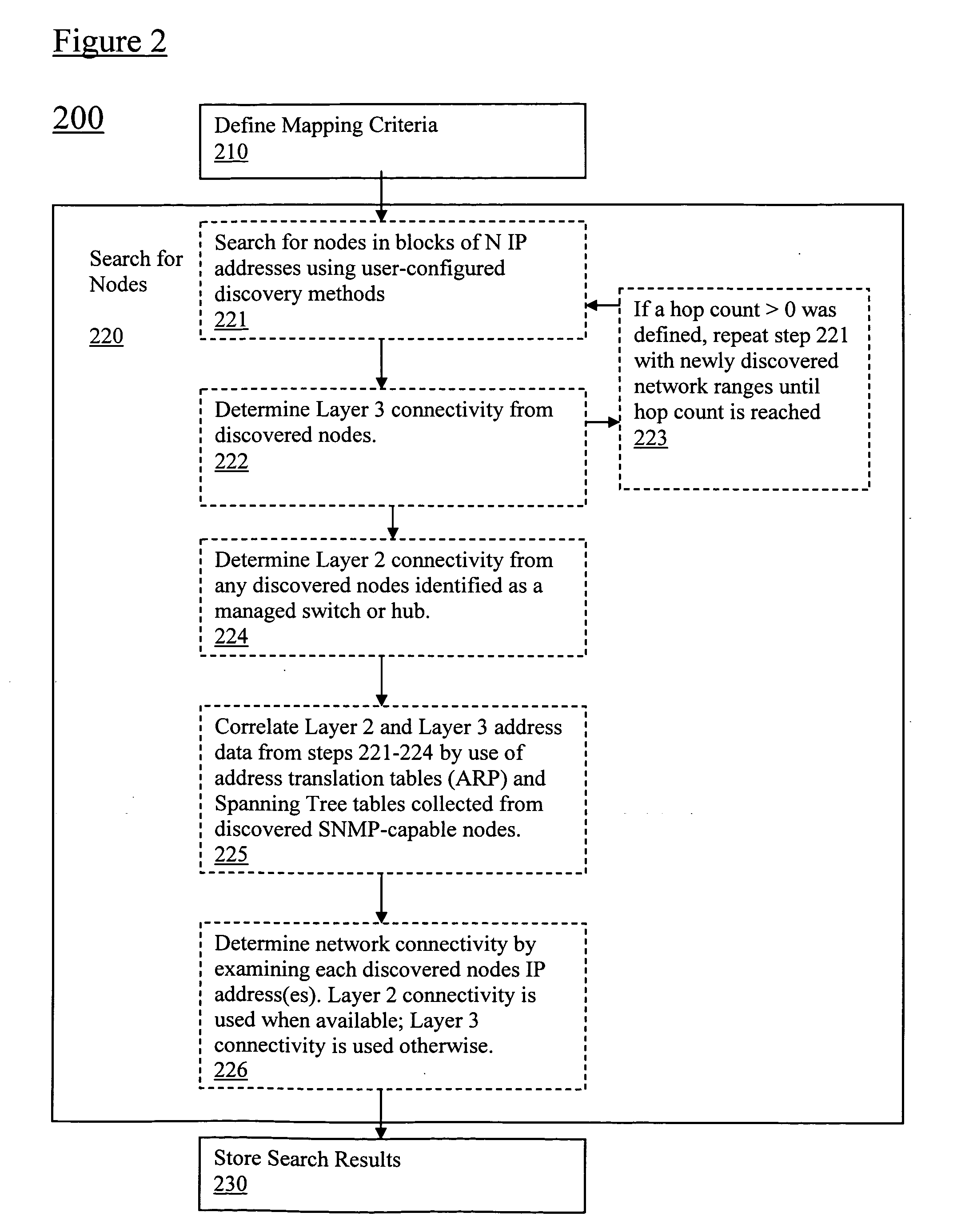Using spanning tree protocol (STP) to enhance layer-2 network topology maps
- Summary
- Abstract
- Description
- Claims
- Application Information
AI Technical Summary
Benefits of technology
Problems solved by technology
Method used
Image
Examples
Embodiment Construction
[0017]Referring to FIG. 1, embodiments of the present application relate to a topology mapping unit 100 configured to connect to network 10 that includes, for example, multiple nodes 1, switches 2 with multiple ports 4, and paths 3.
[0018]The topology mapping unit 100 includes a mapping module 110. In particular, the mapping module 110 is configured to map components in the network 10. Various network topography mapping techniques are known and may be integrated within the embodiments of the present application, as described in greater detail below.
[0019]The mapping module 110 automatically discovers everything on the network, including desktops, servers, printers, switches and routers using identification and discovery methods (ping / ICMP, SNMP, SIP-based VoIP, NetBIOS and more) to scan IP address ranges and find nodes, as described below in FIG. 2.
[0020]Referring now to FIG. 2, a mapping method 200 in accordance with embodiments of the present application is provided. In particular,...
PUM
 Login to View More
Login to View More Abstract
Description
Claims
Application Information
 Login to View More
Login to View More - R&D
- Intellectual Property
- Life Sciences
- Materials
- Tech Scout
- Unparalleled Data Quality
- Higher Quality Content
- 60% Fewer Hallucinations
Browse by: Latest US Patents, China's latest patents, Technical Efficacy Thesaurus, Application Domain, Technology Topic, Popular Technical Reports.
© 2025 PatSnap. All rights reserved.Legal|Privacy policy|Modern Slavery Act Transparency Statement|Sitemap|About US| Contact US: help@patsnap.com



